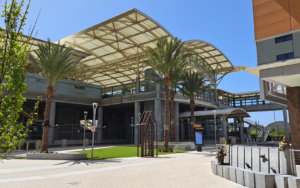
This month (June 2023) is the 20th anniversary of opening of BART SFO extension. Millbrae is the end of the line of this extension & the transfer point between Caltrain and BART. The station was built with an expectation of high ridership & transfer activities, but things changed quite a bit over the past 20 years with changes in economy, transportation/housing priorities, and COVID.

20 years ago I was a young transit activist & a regular Caltrain rider. I was able to see the station being constructed and was there on the opening day.
Before opening of the joint complex with BART, Caltrain platforms were located south of the Millbrae Ave overpass at the old depot building which has turned into a museum. Shuttle bus to SFO boarded passengers across the depot building. BART was planned to be the replacement of the shuttle bus. During the initial years, it was a dedicated 3 car shuttle trains. Later it was part of mainline from SF. For more than a decade, there was no direct service during daytime and transfer was required at San Bruno. Sometime around late 2000s, due to high BART fare surcharge on airport employees, SFO ran a shuttle bus from airport to Millbrae so workers can avoid surcharge, until a deal was made to waive it. In 2018, SamTrans started a shuttle route at around the same time as BART restored direct service. At present, BART and SamTrans (via main line) options are available.
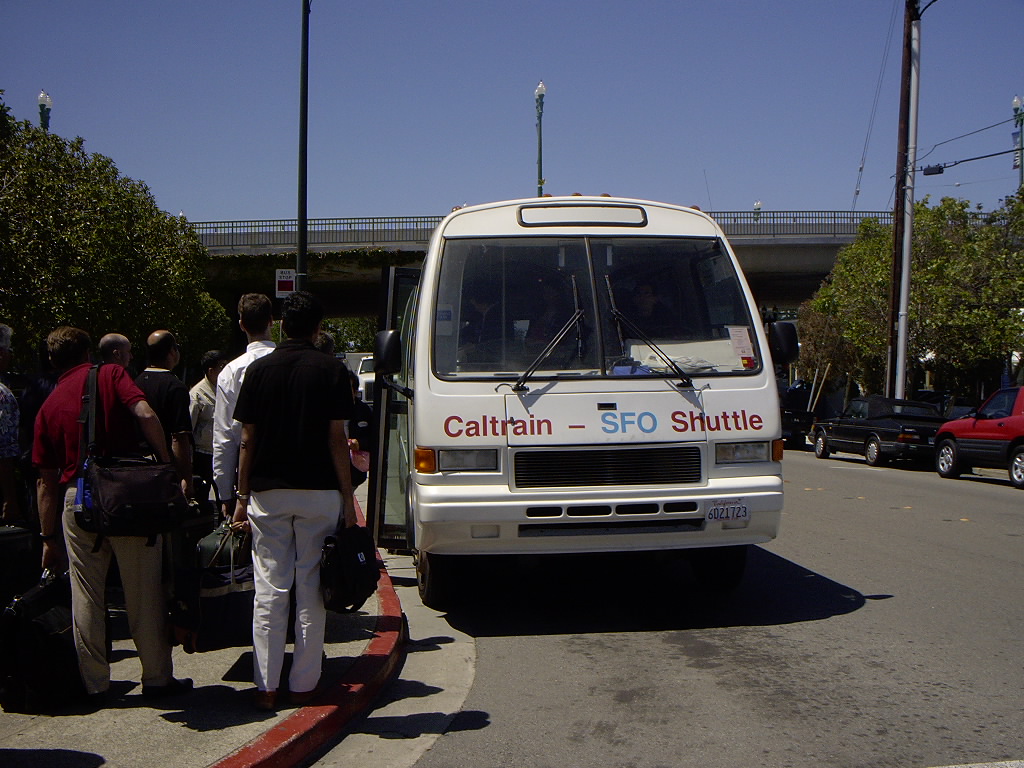
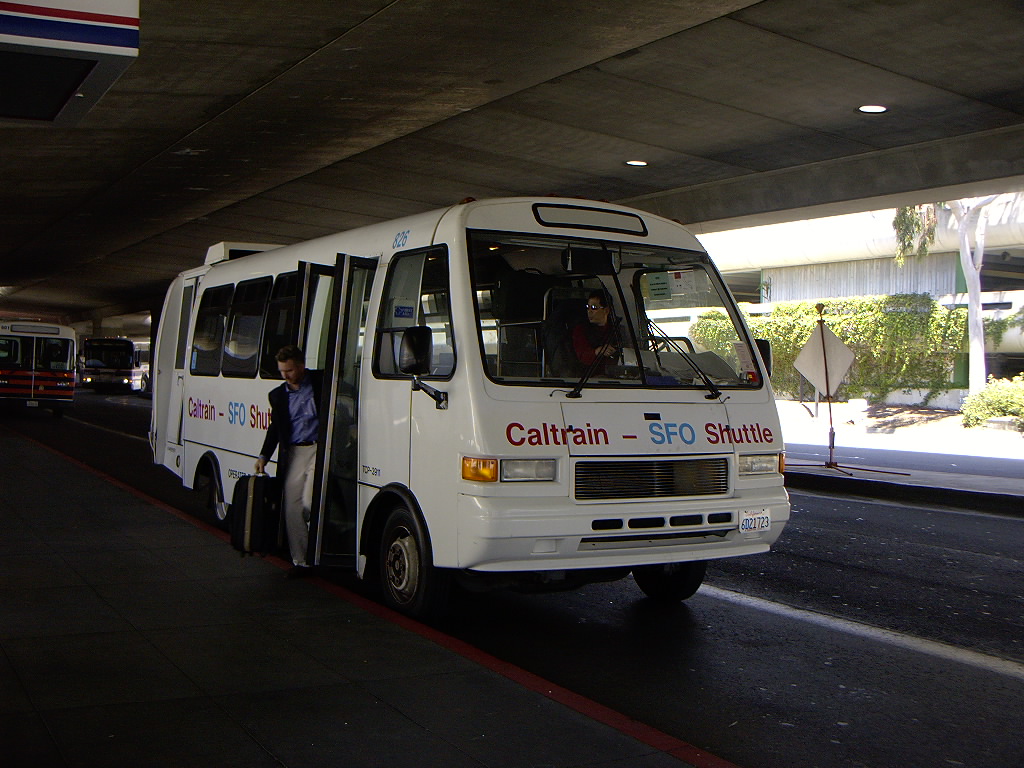



The key feature at Millbrae is direct cross platform transfer between Caltrain and BART. Since the opening, all SF bound BART trains board on platform 3 where direct transfer is possible. As with typical BART over-engineering, the station has 3 tracks & another platform island for BART. During the initial years, BART’s dedicated SFO line boarded on platform 1 or 2, which required riders from Caltrain to go up to the concourse and then go down. Most of the time the platforms 1 & 2 are for disembarking only.
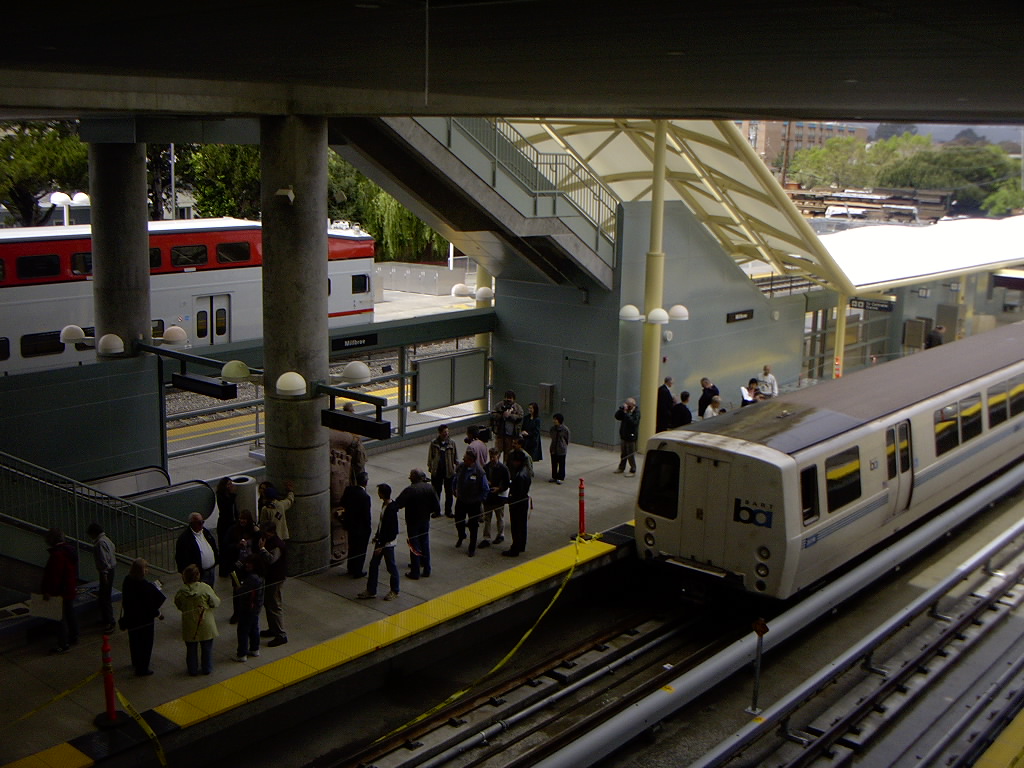

When the station first opened, there were 3 sets of faregates (north, center, south) on the shared island between BART and Caltrain. The south side closed first and was eventually permanently sealed with gates removed. The north side remained in service until COVID hit and eventually closed off (but not sealed). The center gates (that has a station agent booth) is the only access point, with half of the faregates removed.


Another less known feature at Millbrae is the extra platform and siding for Caltrain located south of the Millbrae Avenue overpass. That platform was constructed soon after the BART complex was finished, with the expectation that Caltrain would use that platform to turn trains. In a 1999 Caltrain study, consultant suggested a scenario where trains from SJ would turn at Millbrae.

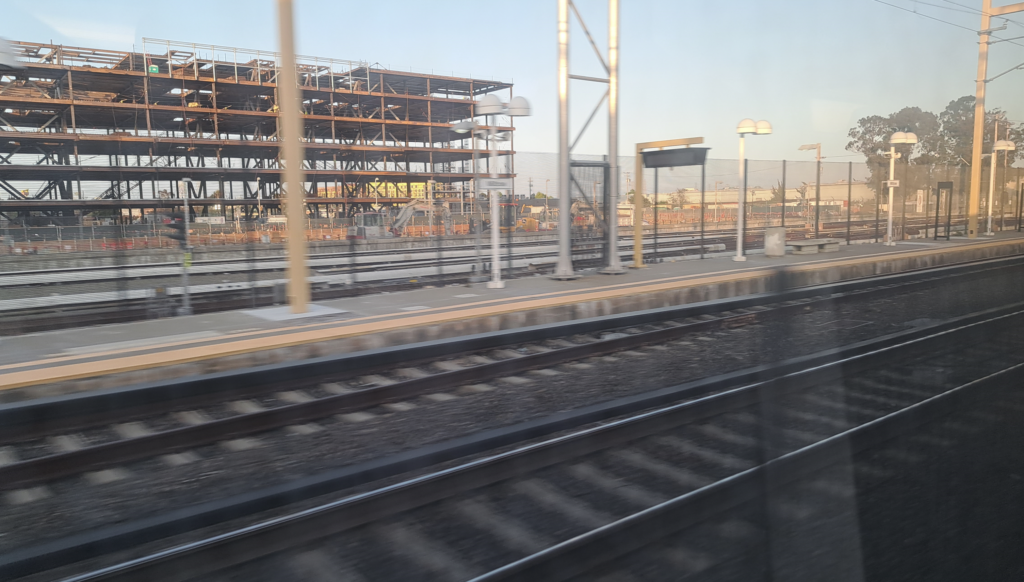
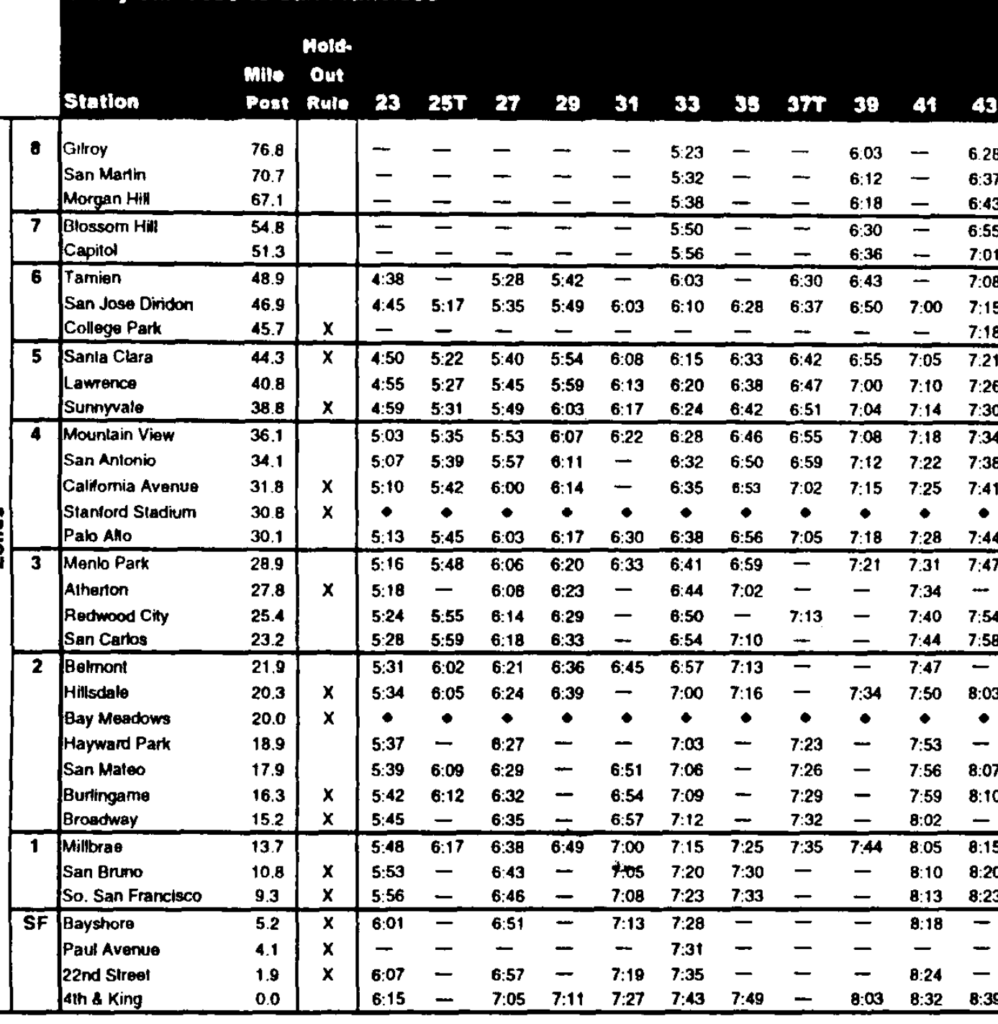
Although infrastructure was made to allow turning back trains possible, it was never used in regular service. Turning back trains there has operational complexities & reduced flexibility. Service north of Millbrae remained popular with the growth in SOMA and the then new Giants ballpark. In fact, until COVID hit, Caltrain had a few trains on its peak schedule not to stop at Millbrae. The siding had been in use during service disruption.


Millbrae station once had a large bus plaza on the east side of station. While large bus plaza is typical for many suburban BART stations and especially for end of the line stops, it was never well utilized at Millbrae. For most of it’s existence, it served mostly as a midpoint stop for three SamTrans routes, and as a terminus for one more. It was primarily served by local commuter shuttles.
Before BART opened in Millbrae, SamTrans operated a series of express bus routes from Peninsula cities to San Francisco. The BART opening didn’t make an impact on these routes. Only the 2008 recession and service cut the year after caused most routes to be discontinued, except for one route from Foster City that was rerouted to serve Millbrae instead of Downtown San Francisco. The Foster City to Millbrae route discontinued soon after as riders preferred a direct bus to San Francisco.
During the 1st decade, the main bus routes from El Camino made a time consuming deviation over the tracks to serve the bus plaza on the east side. When SamTrans streamlined the El Camino service, it eliminated the Millbrae deviation but maintained deviation in San Bruno. Riders transferring from BART to El Camino bus in Millbrae now have to walk to a stop on El Camino.
When BART closed the east side bus plaza for TOD in 2018, all SamTrans buses that served the east plaza were diverted to the west plaza by the southbound Caltrain platform. The 2022 service change caused the 292 route to deviate across the freeway and tracks to the bus stop on the west plaza. That deviation may be convenient, but is unfortunately time consuming for through riders.

The BART opening in Millbrae resulted in a change of access to the Bayside Manor neighborhood. Before the opening, the access was from Millbrae Ave to Aviador Ave via Garden Lane. To reduce neighborhood impact from the anticipated parking crush (that never truly materialized), BART built an underpass at the Caltrain tracks (extending Hillcrest Blvd) to connect the neighborhood to El Camino Real, and closed the automobile access from Aviador Ave to Garden Lane with bollards. I remember the construction of underpass required a couple of weekend Caltrain closures (much less impact from other grade separation projects).
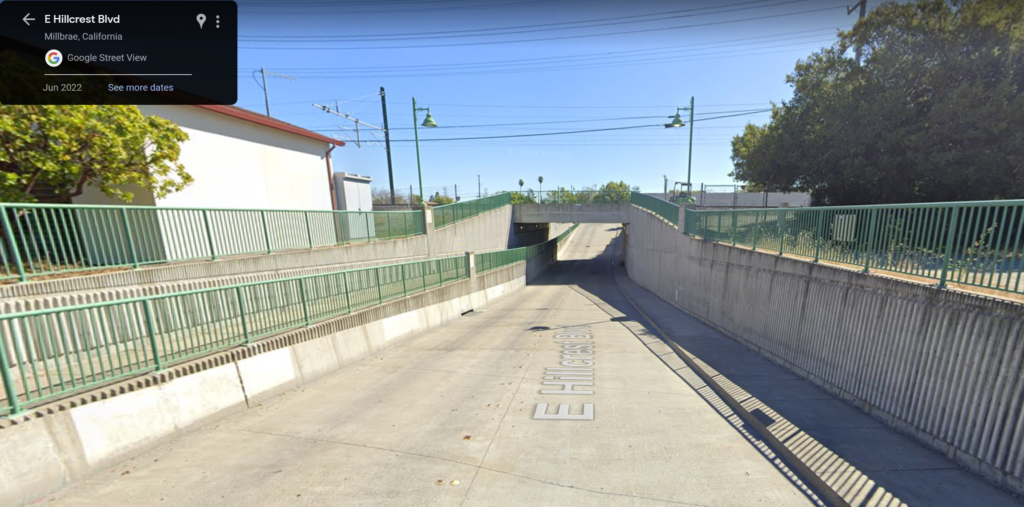
The underpass was the only method for vehicular access to the community and for nearly two decades it was relatively problem free. But after an atmospheric river rain event in December 2021, two days before Christmas, the underpass was flooded overnight and cars were trapped. First responders were able to rescue one person from one of two cars but were unable to rescue others from the other car. Later in the day, two others were found dead inside the flooded vehicle after water was drained. Since that incident, the bollards were removed and the original access from Aviador Ave was opened to automobiles, providing a second point of access with no risk of flooding.
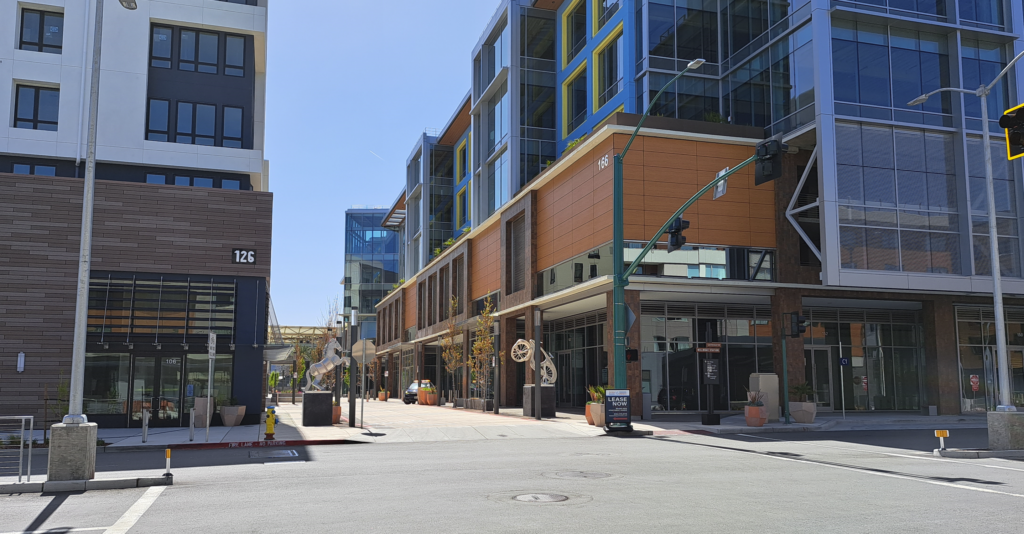
Before the construction of TOD in 2018, the site was a large surface parking lot. This station was originally built with large parking (3000 spaces) due to its end of the line status. One of the motivations why BART was extended to Millbrae was the reluctance for SFO and San Bruno to host an end of the line station. Prior to BART, the area was a low income community known as Millbrae Gardens. About a thousand residents lived on different run-down apartment complexes on Garden Lane. According to the 1996 DEIR for the project, the Millbrae Gardens was considered to be “high minority” and was to be completely displaced to put in parking.


That neighborhood was considered a trouble spot for the city. According to a 1999 news article, “at its worst, nearly 40 percent of all the police calls in the city were to the area, which was plagued with shootings, domestic violence, noise, abandoned cars and garbage tossed into the streets.”
I still find it amazing that the project and the neighborhood removal was approved in the 1990s. I don’t know whether today’s BART board, or today’s FTA, would even consider something like this. But at least, the surface parking area of the station has been redeveloped to put back in more residential units than the original surface lot and parking structure removed.
Although I witnessed the construction, was there on the opening day, and experienced the station when it was new, I can experience the design flaws as the station aged. The concourse is high off the ground and the elevators from the platform are slow and not well located. To access from the street with a bike or mobility device to BART or northbound Caltrain, one would have to use two elevators. There’s always a risk of missing a transfer from BART to Caltrain because of the height of the concourse and the need to make two level changes.

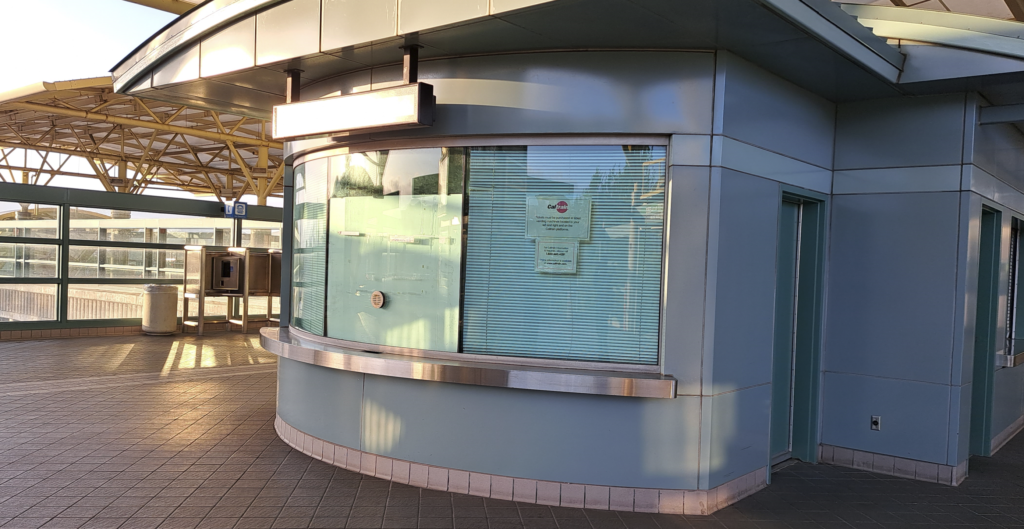

Millbrae stations was built with additional facilities that never got used. On the course, there’s a kiosk originally for Caltrain ticket agents when the agency was selling tickets in person. Caltrain eliminated in person sale systemwide soon after the opening as part of budget cut and transition to ticket vending machines. There’s another kiosk on the southbound Caltrain platform under the stairs that was meant for a snack vendor or cafe common in East Bay stations. Throughout the station you see empty phone booths with broken TDD keyboards. A feature that might have been essential when it was designed in the mid 90s that’s no longer relevant.
The station’s canopy structure & fabric covering is supposed to make the station airy, but given the local climate, the structure makes the station unpleasant for extended wait. Riders often complain about the wind. During rain, most of the concourse can be wet. Often, part of the concourse (slippery compass tiles) is blocked & faregates are covered to reduce risk of rider injury and damage to equipment.
Another issue is safety, since COVID, there’s a visible increase of unhoused people and drug use at the station. I’ve seen drug use behind stairs near the bike lockers on the north side of the Caltrain southbound platform, where the area is not visible from the street. The area can be particularly sketchy at night as homeless riders are kicked out of BART trains. However this station has transit around the clock with SamTrans owl service.
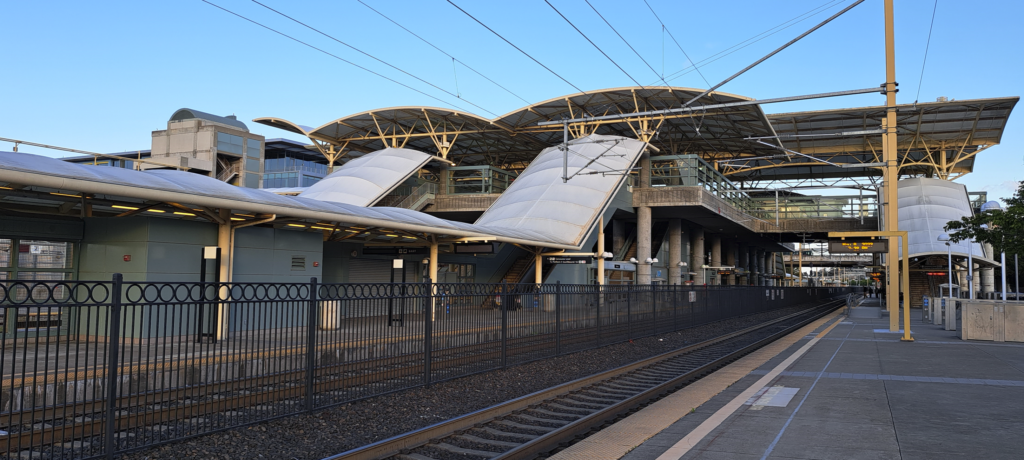
I find it amazing that it’s 20 years already. A 20+ year-old me would’ve considered something happened 20 years ago to be ancient history, but now a 40+ year-old me can remember the 20 year saga. We’ll see what happens in the next 20 years.